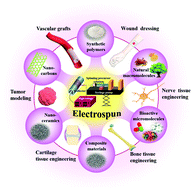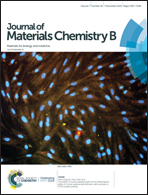Progress in electrospun composite nanofibers: composition, performance and applications for tissue engineering
Abstract
The discovery of novel methods to fabricate optimal scaffolds that mimic both mechanical and functional properties of the extracellular matrix (ECM) has always been the “holy grail” in tissue engineering. In recent years, electrospinning has emerged as an attractive material fabrication method and has been widely applied in tissue engineering due to its capability of producing non-woven and nanoscale fibers. However, from the perspective of biomimicry, it is difficult for single-component electrospun fiber membranes to achieve the biomimetic purposes of the multi-component extracellular matrix. Based on electrospinning, various functional components can be efficiently and expediently introduced into the membranes, and through the complementation and correlation of the properties of each component, composite materials with comprehensive and superior properties are obtained while maintaining the primitive merits of each component. In this review, we will provide an overview of the attempts made to fabricate electrospinning-based composite tissue engineering materials in the past few decades, which have been divided into organic additives, inorganic additives and organic–inorganic additives.

- This article is part of the themed collections: Editor’s Choice: Scaffold Engineering and Recent Review Articles


 Please wait while we load your content...
Please wait while we load your content...